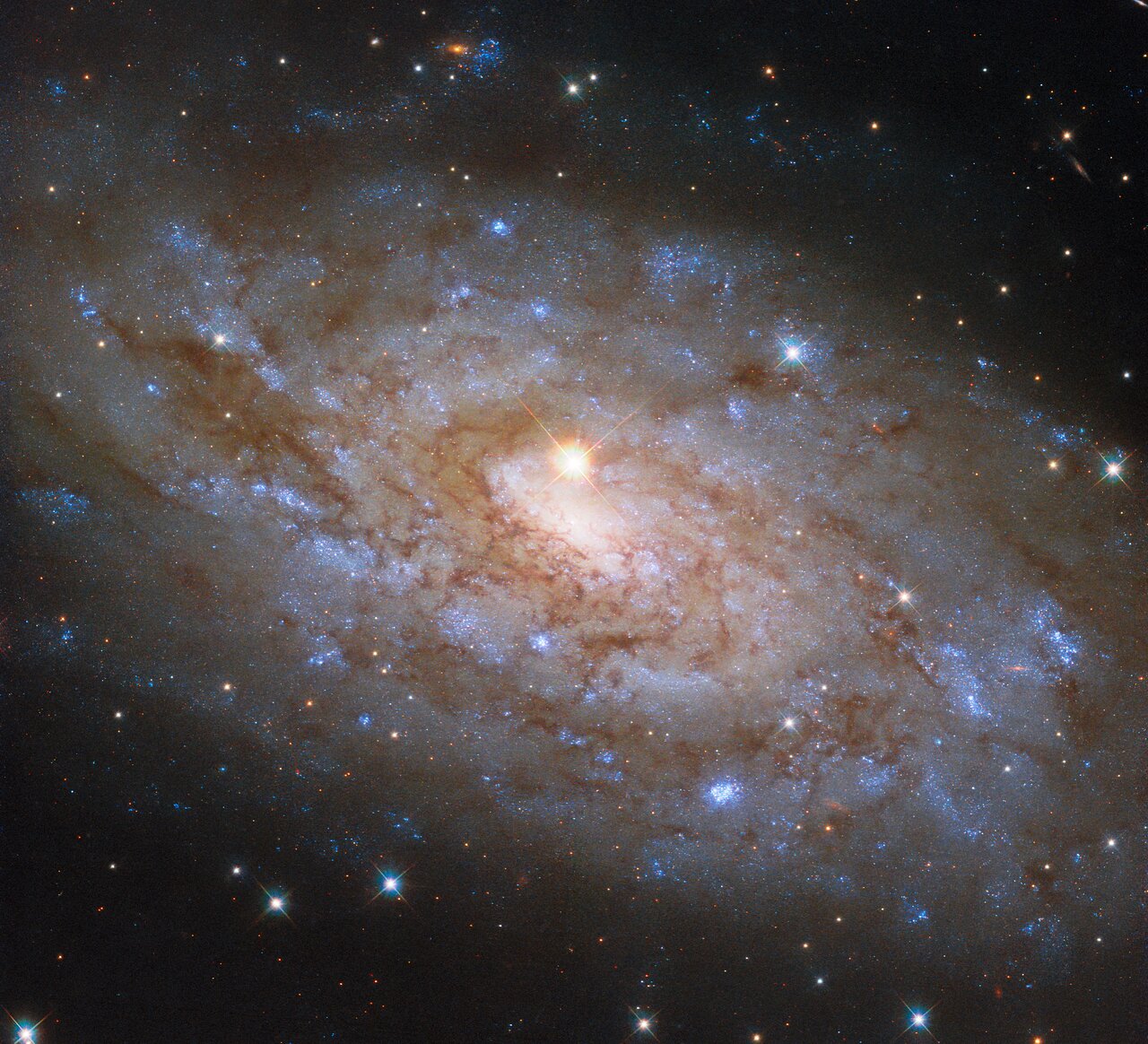Astronomers working with the Hubble telescope have published a new image. It shows the spiral galaxy NGC 5530. The image gives the impression that it has a very bright nucleus — but in fact, it doesn’t.

The galaxy photographed by Hubble, is located 40 million light-years away from Earth toward the constellation Lupus. Its cross-section is about 60,000 light-years across. For comparison, the diameter of the Milky Way’s disk is 100,000 light years.
NGC 5530 is classified as a flocculent spiral galaxy. They include galaxies whose spiral arms are not continuous structures, but consist of separate pieces. Approximately 30% of spiral galaxies are flocculent.
A bright object is at the center of NGC 5530. It may appear to be its active core. But while some galaxies have very bright central regions due to the activity of the black holes lurking in them, this is not the case with NGC 5530.
In fact, the bright source near the center of NGC 5530 is not an active black hole, but a much closer star in our Milky Way. It is only 10,000 light years from Earth. This coincidence gives the impression that the star is located in the heart of NGC 5530.
In 2007, a supernova was found in NGC 5530. It was discovered by amateur astronomer Robert Evans. Subsequent observations allowed the event to be classified as an IIP-type supernova outburst. It was formed by the collapse of a giant star whose mass was 16-27 times that of our Sun.
Remember that earlier Hubble photographed stars and multicolored clouds in the heart of a neighboring galaxy.
According to Esahubble


